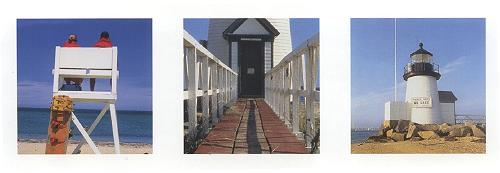|
English Language
|
Colour Names and Connotations
Connotations are connections between things or ideas.
If I call the colour brown “squirrel” I am hoping you will make a connection between this colour and the friendly little brown nut gatherer.
If I call that brown
“sludge” you may make a connection with effluent, unprocessed
waste and slime.
Brown is neutral, squirrel
is positive and sludge is
negative.
We can express this in a table to which you can add your own examples.
1. Cut up a colour chart from your local paint shop or choose colours from the Gotomy site and print off your own preferred colours.
2. Create a range of colours which would be attractive in their descriptions for
a. someone your age
b. someone of your parents’ age
c. a young child
For example:
| your age |
parents |
child |
|
| mad eye pink |
blush pink |
girly pink |
|
| blue haze |
suffolk sky |
pretty blue |
Remember that connotations are different for different audiences so the names of the colours will have to appeal to their interests or background.
Semantic fields
3. Group the names from your colour charts into semantic fields. These are groupings in which the words have the same connections or connotations - words of the sea, words of the weather, words of spices and herbs ...
For example, The New England Company uses connotations associated with Cape Cod, clearly relying on the blue-grey sky and grey-green sea for their inspiration.

Their first set of ten colours in pale yellow, blue grey and blue-green
(impossible to match here with web colours) are described as:
| sea breeze | independence | cape cod | harbor | picket fence |
| cheesecake | main street | windswept | seafoam | vineyard |
All these have associations with the sea, the
coastal wind, (and an area nearby known as Martha’s Vineyard).
The New England Company’s second set of colours is warmer with yellows,
oranges and reds. Names relate to the ocean but also autumn and the later
part of the year:
| fish
bone |
mainsail |
canvas |
pecan |
harvest
moon |
| cobble
stone |
rich
barley |
maple
leaf |
pumpkin |
autumn
leaf |
In contrast, the Craig and Rose catalogue emphasises
the age associated with the colours. It divides its colours into Ancient
World, Ming Period, Renaissance, Rococo, Georgian & Regency, Victorian
and Arts & Crafts.
Its descriptions, supplementing the names recall the romance or exoticism
of the period:
Beauvais Cream – a rich cream typically found in the tapestries woven by the Beauvais workshop in France
Jasper Cane – a classic yellow found on the Pate sur Pate relief earthenware. Made at their factory in Etruria ….
Sung Yellow – characteristic yellow found in silk woven in China during the Sung period (960-1279).
Kings Yellow – a yellow which was widely used in Italy on religious artefacts and paintings, such as El Greco, “Adoration of the name of Jesus.”
These colours are, of course, simply colours in the almost infinite range of pigments available, and may be similar or even identical to colours identified by other manufacturers.
4.
Here are colours which seem to be roughly similar but have been given
different names.
• What differences are there in the connotations of each name?
• What is the manufacturer trying to achieve by naming colours in
this way?
Dulux |
Homebase |
Craig
& Rose |
Laura
Ashley |
| Cornfield |
Marigold |
Kings yellow |
Deep cowslip |
| Putting green |
moss |
Tapestry green |
- |
| babe |
waterbaby |
Rose |
pink peony |
| Venetian lagoon |
iris |
- |
chambray |
5. Some
of the words may be unfamiliar to you.
Use a dictionary and other reference sources to find the meaning of the
following words:
| Pale Medici blue | (Craig & Rose) |
| Moonstone grey | (Craig & Rose) |
| Smalt | (Craig & Rose) |
| Pompadour | (Craig & Rose) |
| Etruscan red | (Craig & Rose) |
| Pugin red | (Dulux Heritage) |
| Montpelier green | (Dulux Heritage) |
| Sienna white | (Dulux Heritage) |
| Tuscan Terracotta | (Dulux) |
| Zest | (Homebase) |
| Pecan | (Homebase) |
| Lapis blue | (Homebase) |
| Magnolia | (Homebase) |
6. Look
at your colour charts.
Which names convey…
Emotions
Recollections
Connections
Atmosphere
History
Exotic
Places
• What do these words mean?
• How do they convey connotations to customers?
• What are they trying to sell to the customers?
|
|